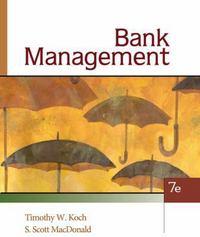


Question:
Address all questions clearly showing your working.
Hatton is heavily geared. The company's equity has a book value of 1900 million and its debt has a book value of f350 million. Hatton made a large share issue last year and the directors do not believe that they could seek further equity in the short term. The company's debt includes a major loan from a commercial bank that carries a debt covenant under which the loan is repayable in the event that gearing (measured as debt as a percentage of total finance) exceeds 30%. Hatton's marketing director is keen to proceed with Project B on the basis that it offers the greatest opportunity to enhance the company's share price. Hatton's chief executive is keen to proceed with Project A on the basis that it will be possible to finance that project without taking the company to the very brink of its debt covenant. Hatton's finance director has urged caution and recommends refusing both opportunities on the grounds that the only cost of doing so is the opportunity cost. His reasons for this recommendation is that the company is already heavily involved in the games business and it might be better to diversify into other areas of entertainment. In his opinion, refusing the projects will not risk harm to Hatton's share price. (i) Outline the reasons why a bank might impose a debt covenant such as that affecting Hatton's borrowing capacity. [6] (ii) Discuss the risks associated with Hatton permitting its borrowings to rise to the maximum gearing level agreed with its bank. [6] (iii) Discuss the validity of comments made by the finance director that: (a) the share price will not be harmed by the opportunity cost associated with turning down an investment project with a positive NPV. (b) the share price could be improved by Hatton diversifying its investment base. [8] [Total 20]Hatton is a quoted company in the entertainment industry. The company's directors are extremely ambitious and strive to maximise Hatton's rate of growth. The directors have identified the availability of finance as the company's biggest constraint. The directors have been offered the opportunity to invest in two projects, each involving the development of a new games console. The projects involve competing products and so they are effectively mutually exclusive because there would be no commercial justification in investing in both. Project A requires an investment of f20 million and has a projected net present value of f80 million. Project B requires an investment of f50 million and has a projected net present value of f.200 million. Hatton does not have any spare cash and so it will have to raise finance in order to invest in either project. The directors of Hatton are unable to decide which of the two investments is better for the company. Each is relatively risky, but the two projects are exposed to virtually the same factors that will determine success or failure and, in that sense, the risks are virtually identical.(i) Discuss the suitability of the crude death rate, the standardised mortality rate and the standardised mortality ratio for comparing: (a) the mortality, at different times, of the population of a given country (b) the mortality, at a certain time, of two different occupational groups in the same population [6] (ii) The following table gives a summary of mortality for one of the occupational groups and for the country as a whole. Occupation A Whole country Age group Exposed to Deaths Exposed to Deaths risk risk 20 -34 15,000 52 960,000 3.100 35 -49 12,000 74 1,400,000 7,500 50-64 10,000 109 740,000 7.100 Total 37,000 235 3,100,000 17,700 Calculate the crude death rate, the standardised mortality rate and the standardised mortality ratio for Occupation A. [4] [Total 10]












